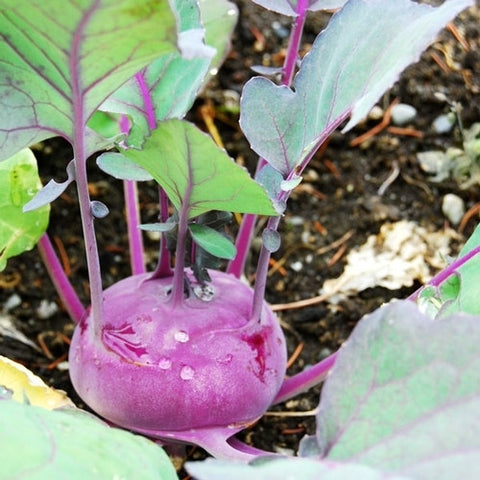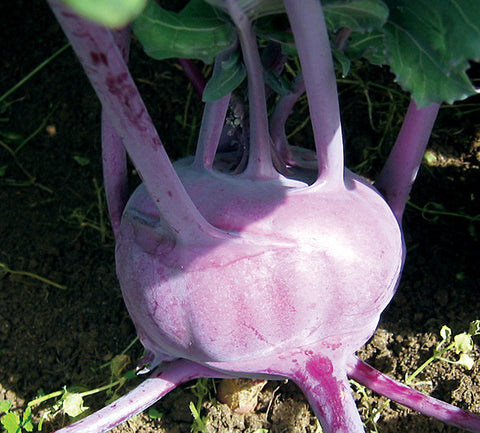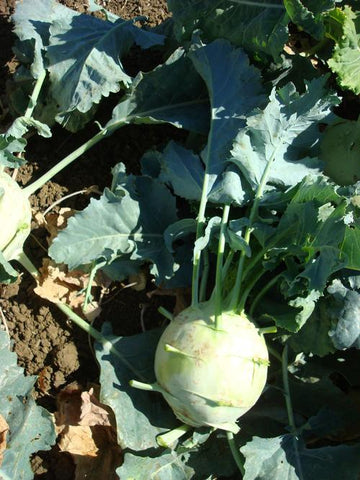SEED CALCULATOR ❌
Number of Plants 0
Weight 0 oz
at 0 seeds per foot

Kohlrabi
Brassica oleracea gongylodesCertification
Harvest
Size
Heritage
Season
Kohlrabi is a German word adopted without change into our language, Kohl meaning cabbage and Rabi meaning turnip. This "cabbage" with a turniplike enlargement of the stem above ground was apparently developed in northern Europe not long before the 16th century. The marrow cabbage from which it probably came is a cold-tender, nonheading plant with a thick succulent stem, while kohlrabi as we know it is a hardy vegetable, evidently developed in a cool climate.
The first description of kohlrabi was by a European botanist in 1554. By the end of the 16th century it was known in Germany, England, Italy, Spain, Tripoli, and the eastern Mediterranean. It is said to have been first grown on a field scale in Ireland in 1734, in England in 1837. In the United States, records of its use go back to 1806. Delicious kohlrabi recipes.
Companions: onions, beets, cucumbers, aromatic herbs
Inhibitors: tomatoes, strawberries, pole beans

-
Price List
Kohlrabi is a German word adopted without change into our language, Kohl meaning cabbage and Rabi meaning turnip. This "cabbage" with a turniplike enlargement of the stem above ground was apparently developed in northern Europe not long before the 16th century. The marrow cabbage from which it probably came is a cold-tender, nonheading plant with a thick succulent stem, while kohlrabi as we know it is a hardy vegetable, evidently developed in a cool climate.
The first description of kohlrabi was by a European botanist in 1554. By the end of the 16th century it was known in Germany, England, Italy, Spain, Tripoli, and the eastern Mediterranean. It is said to have been first grown on a field scale in Ireland in 1734, in England in 1837. In the United States, records of its use go back to 1806. Delicious kohlrabi recipes.
Companions: onions, beets, cucumbers, aromatic herbs
Inhibitors: tomatoes, strawberries, pole beans



